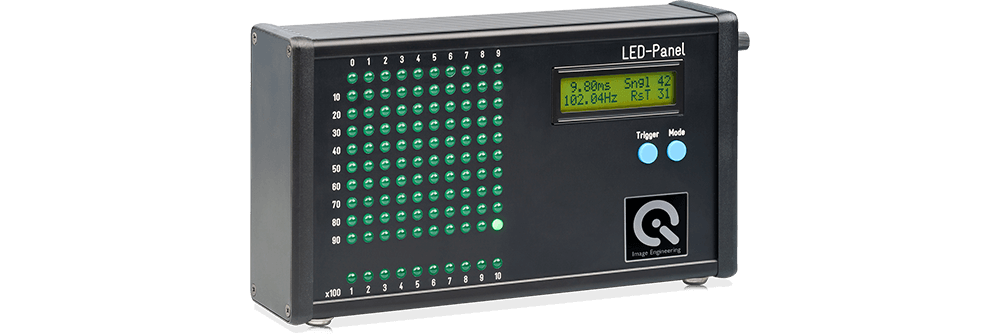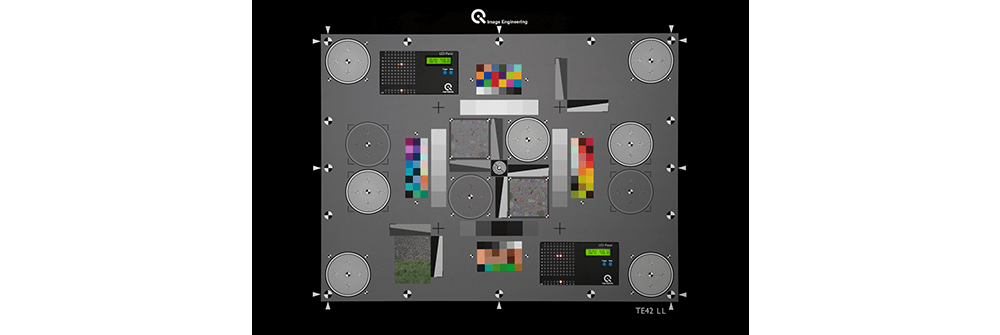Timing
Image Quality FactorsIntroduction
One of the most crucial components of a camera system is the performance of its various timing parameters. These parameters are essential to capturing and processing images and help control a camera system's exposure, synchronization, and overall performance. During the development stage of a camera system, developers must understand and test these timing metrics using the proper test equipment to ensure the system is functioning correctly and can produce images with a high level of image quality.


The importance of timing measurements
Without precise timing, camera systems will experience profound image quality issues. For example, in the images above, you will notice that the bird in the right image is out of the frame due to shooting time lag. However, imagine if an autonomous driving system is experiencing shooting time lag issues. Objects would not appear in the correct areas in the scene, which could lead to false adjustments and create dangerous driving situations.
As a result, it is crucial to fully understand the effects of different timing metrics on a camera system's performance. Many timing parameters can affect the image quality, and each one should be tested to ensure high performance and safety.
Timing parameters
Understanding and controlling timing parameters allows camera system operators to achieve their desired exposure settings, motion capture, and overall image quality. Each parameter plays a crucial role in the performance and capabilities of a camera system in different scenarios.
Shutter speed and Exposure time
Shutter speed in traditional cameras refers to the duration the system's shutter remains open. For a camera system without mechanical shutter, e.g., mobile phones, we use the term exposure time to indicate when the camera's image sensor is "open" and exposed to the light.
Faster shutter speeds or exposure times can reduce motion blur. In comparison, lower speeds or longer exposure times allow more light to enter the camera, which is essential when capturing low-light scenes, but if left open too long, it can result in a blurring effect. Shutter speed is generally measured in fractions of a second, such as 1/250 or 1/50.
Autofocus time
Autofocus time determines how quickly and accurately the camera system can focus on the subject in the scene. A fast and precise autofocus performance allows users to capture sharp images in various shooting conditions, including fast-paced situations with moving subjects. It is crucial to test autofocus under different illumination conditions, especially in low light, where the camera may struggle to identify and focus on the subject.
Shutter and Shooting time lag
Shutter time lag refers to the time between initiating the camera's trigger and the actual start of the image capture. This parameter is significant whenever precise timing is required, e.g., capturing fast-moving objects as they appear in the frame.
Shooting time lag is the same as shutter time lag but includes autofocus time. In other words, we are measuring the time interval between pressing the camera's trigger and the autofocus time before the actual start of the image capture. Shutter and shooting time lag should be evaluated for their performance to ensure all user requirements are met.
Frame rate
Frame rate describes the number of individual frames captured and stored per second by the camera. Higher frame rates better stabilize motion in a scene and are, therefore, more beneficial for video recording or fast-paced scenes. Frame rate is measured in the number of frames captured per second (fps). Standard frame rates include 24 fps (cinema production) and 30 or 60 fps (home video recording). Evaluating frame rate performance requires the correct shutter speed to capture the desired number of frames.
Display refresh rate
Camera display refresh rate refers to the number of times the image on the camera's display is refreshed per second. A higher frame rate will make a series of images appear smoother during the transition from image to image. A lower refresh rate often leads to problems with object alignment based on the information on the display. Display refresh rate is measured in Hertz (Hz), which indicates the number of refresh cycles per second.
Rolling shutter speed
Rolling shutter describes a certain way that a sensor is read out. While cameras with a mechanical shutter can read out even when there is no light on the pixel, a camera with a rolling shutter and not mechanical or global (i.e., a camera that captures the whole frame in one instant) will read out line by line. Depending on the difference between the first and last line read out, the objects moving in this time will show a distortion.
Startup time
Startup time refers to the time it takes for the camera to reach full working capability after pressing the power button. While this may not seem like a crucial timing parameter, it can be essential to consumers. For example, if a consumer is using a camera that is currently off or stored away, how fast can it be ready to take a picture once they turn it on and activate it? If the camera needs more than five seconds, then it is likely that the person will miss the moment they want to capture, especially if it is a moving object.
Testing the timing parameters
Each timing parameter should be thoroughly tested during development to ensure a high-performing camera system. We recommend following ISO 15781, which describes measurement methods and performance thresholds for the various timing parameters.
LED-Panel
The LED-Panel is a timing measurement device that we utilize in our iQ-Lab and closely follows the guidelines set by the ISO standard. It provides various illumination modes and frequencies depending on the metrics under test. All the timing parameters previously described can be measured using this device, and many can be measured in one image. The LED-Panel also offers the ability to dim the LED board to improve low-light testing and is also available with infrared features for timing measurements in the near IR range.

Setting up a timing test lab
In our iQ-Lab in Kerpen, we regularly use the LED-Panel for timing measurements. In addition, we have innovated new testing methods to incorporate timing measurements more smoothly into our workflows.
Multipurpose test charts
Timing is only one of the vital image quality factors that should be evaluated for camera performance. Others include resolution, distortion, color accuracy, shading, dynamic range, etc. With so many factors and different test requirements, we recommend using a multipurpose test chart, such as the TE42-LL. To further increase test lab efficiency, we have incorporated two LED-Panels into the TE42-LL chart, named TE42-LL Timing, to measure all of the critical timing parameters alongside other image quality factors in one test image.

Controlling Autofocus
One issue that often occurs in testing these timing parameters is controlling the camera's autofocus. When taking multiple test images, ensuring the autofocus is the same for every image can be difficult. In our iQ-Lab, we use the iQ-Near Focus to help us reset the autofocus during camera testing. This device uses a motorized translucent checkerboard chart that, once engaged, quickly lowers out of the camera's view so that the camera can focus on the scene (or test chart) behind it.
When combining the iQ-Near Focus with the TE42-LL Timing test chart, you create a powerful solution for measuring the timing parameters of a camera system.

Conclusion
Understanding and testing the performance of the most important camera timing parameters is essential for high image quality. These parameters, including autofocus time, exposure time, shutter and shooting time lag, frame rate, and rolling shutter speed, are crucial for correctly capturing and processing images.
During the development stage of a camera system, developers must understand and test these timing metrics using the proper test equipment to ensure the system is functioning correctly and, in cases of autonomous driving or security surveillance, safely.

